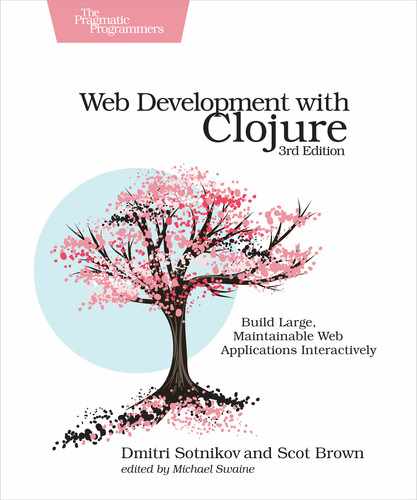What You’ve Learned
Okay, that’s the whirlwind tour. By this point you should be getting a feel for developing web applications with Clojure, and you should be comfortable with some of the Clojure basics. You saw how to use Leiningen to create and manage applications. You learned about HTTP routing and some basic HTML templating. While we didn’t explore many aspects of the skeleton application that was generated for us, you saw how the basic request life cycle is handled.
We’ll be diving deeper and writing more code in upcoming chapters. If you aren’t already, you should start using one of the popular Clojure-aware editor plugins, such as Cursive (IntelliJ), Calva (VSCode), Cider (Emacs), Fireplace (Vim), or Counterclockwise (Eclipse). We can’t overstate the value of these tools, and we strongly recommend taking the time to set one up. See Appendix 2, Editor Configuration, for guides on setting up a few popular Clojure editors.
In the next chapter, we’ll delve into the details of the Clojure web stack to understand some of the details of how our application works.
